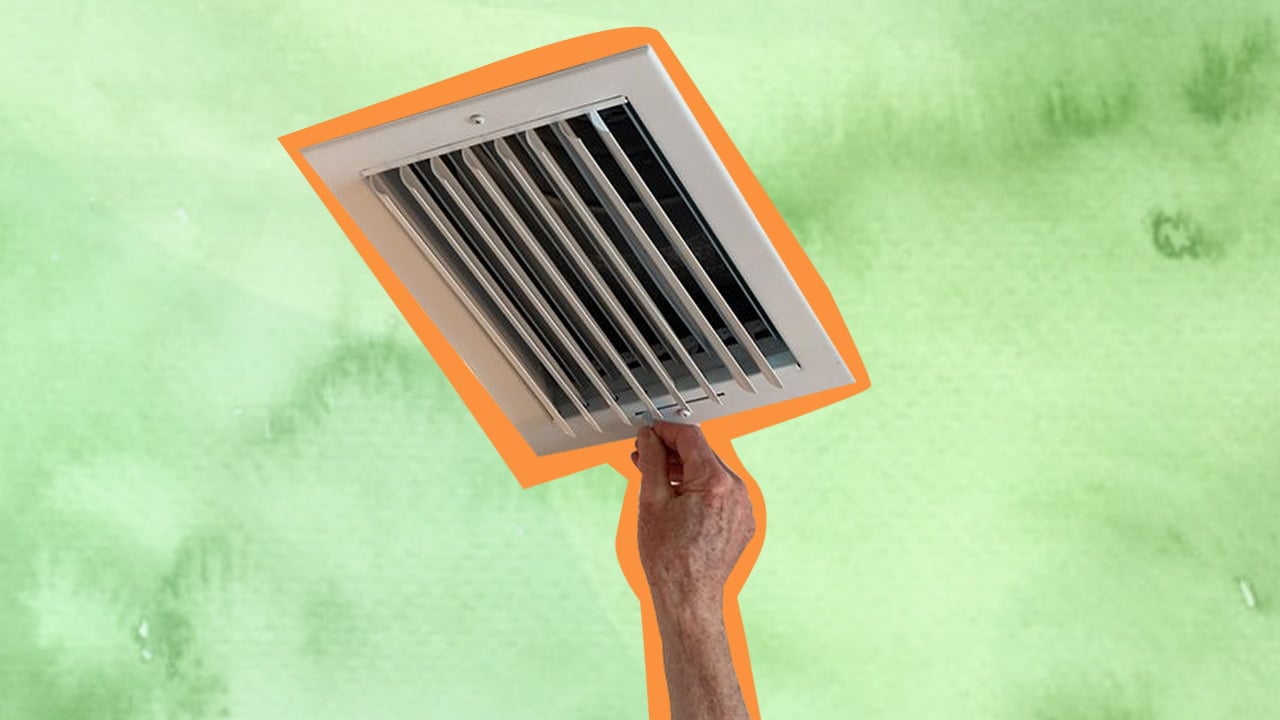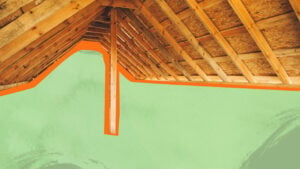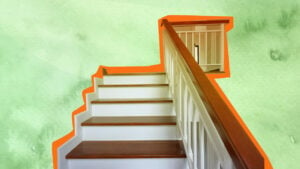Installing smart thermostats or multiple thermostats, setting the right thermostat temperature, undertaking proper cleaning and maintenance of the ductwork, and installing insulation can help keep the upstairs cool in summer. Other solutions include replacing the AC system and opting for a mini-split unit.

A common problem in multi-story houses is that the upper floors do not remain cool in summer.
Even with powerful AC systems operating for most of the day, your upper floor may remain uncomfortably hot. This can become a serious problem and even pose a health hazard during summer.
This guide explains some of the reasons for this problem and provides some effective solutions to help you resolve it. So, let's begin!
How Does House Design Affect Cooling?

In multi-story houses, the upper floors are hotter than the lower ones simply due to the design of the house. It is important to understand the relationship between the design, temperature, and air to know why your air conditioning may not be doing a good job cooling the second floor.
When the temperature is high, the air becomes hot and loses density, becoming lighter. When it becomes lighter, it rises up while cold air, which is denser, sinks down. Because of this, your air conditioner has to work harder to keep the rooms on the upper floor cool in a two-story building.
It will have to function continuously to control the temperature and prevent the second floor from becoming unbearably hot. This will not only lead to higher power bills but also result in faster wearing down of the air conditioning unit. So, you may need to spend more on repairs and maintenance or even replace the unit sooner than expected.
Apart from the fact that heat rises, you should also be aware that it actively moves towards colder areas to ensure that the temperature is in equilibrium. So, in interior environments such as the inside of your home, the air will try to maintain this equilibrium between different rooms having varying temperatures.
The hot air will constantly try to move toward cooler rooms, heating up the space through which it passes. For instance, uninsulated attics allow the entry of hot air from the roof, which will then move toward the cooler areas, heating up the rooms on the upper floor. This will prevent them from getting cooled properly.
While this is the basic reason why your second floor does not remain cool in the summer, other factors also affect this. And I've shared these factors in the next section.
Factors Preventing Your AC From Cooling Upstairs Properly
1. Single Thermostat Or Air Conditioner
In multi-story homes, a cooling system that has a single thermostat may not be effective enough to keep rooms on the upper levels cool. The reason is that a single thermostat will only sense the temperature of the area where it is installed and will adjust the temperature accordingly.
This will result in other areas, such as rooms located upstairs, not getting cooled properly. Generally, this problem occurs in homes where the thermostat is located on the first floor. In such cases, the thermostat will only turn on the air conditioner when the floor gets warm.
2. Improper Functioning Of The Ducts
The ductwork present in your home allows cool air from the air conditioner to reach various rooms and areas of the house. However, in many cases, there can be a problem with these ducts. They may be allowing hot air to leak through, or their design may be faulty, leading to ineffective cooling.
Alternatively, the installed ductwork may be very old and may have worn out, or the number of ducts present may not be adequate. Sometimes, the ductwork may be installed incorrectly, which will also result in this problem.
In any case, faulty or outdated ductwork will prevent cool air from reaching your second floor, so you will always feel hot upstairs.
3. Incorrect Location Of Your AC Unit
Besides bringing cool air into the house, an air conditioner has to remove hot air and humidity and push it outside. In most houses, the central heating and cooling system is located on the first floor, which can prevent it from expelling hot air outside effectively. The reason is that cool air always sinks down while hot air tends to rise.
So, if the cooling system is located downstairs on the first floor, cool air will not rise to the upper floors. Instead, it will sink back to the same or lower level. To offset that, the air conditioning system will need to work harder to push cool air upwards.
In such circumstances, the system can overload, and its components can wear out more quickly.
4. Hot Air In The Attic Or Roof
In houses where the roof is not insulated or improperly insulated, hot air can enter from the top and keep the temperatures high on the upper floors. The heat of the sun is absorbed by the roof, which in turn leads to the heating up of the air present upstairs.
This heat transfer can also occur from the attic area if it is not insulated properly.
5. Cooling Requirements Exceed The Cooling Capacity Of Your AC
You should check the cooling capacity of your air conditioner if it is unable to cool the second floor properly. The system may lack the capacity to cool multi-story buildings or may have become ineffective if more rooms have been added to the house recently.
6. Outdated HVAC System
If your roof is insulated properly and the air conditioner is located on the second floor, then the lack of proper cooling may be due to an outdated HVAC system. This usually happens when you continue using the same air conditioner for more than ten to 15 years. The best solution, in this case, is to replace the worn-out cooling system with a new one.
7. Incorrect Temperature Setting On The Thermostat
Sometimes, your upper floors remain quite hot even with multiple air conditioners and proper roof and attic insulation. If that is the case, the most likely cause is an incorrect temperature setting on the thermostat.
People tend to set the same temperature for all the floors in their homes. But as hot air rises, the temperature upstairs becomes much higher, and the thermostat setting may not be adequate for proper cooling.
To resolve that, you can simply adjust the temperature setting on the thermostat to make it cooler for the second floor. Or use zoning, sensors, and smart thermostats that can control the temperature automatically.

Why Should You Keep Upstairs Cool?
Houses with more than one floor are more difficult to cool properly, especially upstairs, due to the reasons I mentioned above. While it will cause discomfort to the residents occupying the rooms on the upper floors, there is another reason why you should keep the second floor cool.
And this is related to the functioning of your AC system. While the first floor can be cooled effectively, your air conditioners will perform even better if the hot air can be eliminated. They will require less power while delivering better cooling, resulting in lower power bills.
How To Keep Your Upstairs Cool
Depending on the reason why your upper floors are not getting cooled properly, there are a few solutions that can help you resolve the problem. I've mentioned the best ones here.
1. Undertaking Maintenance Or Replacement Of The Ductwork
If the cause of your upper floors not cooling properly is that the ductwork is clogged with dust, then the best solution is to get it cleaned. For that, you will need to hire duct cleaning professionals who can clean the ductwork and undertake other maintenance activities.
In some instances, it is possible to seal the ducts using metal tape if the rest of the ductwork is fine. But a complete replacement might be the best solution if it has become too old or worn out. This can also be performed by the professionals hired for ductwork maintenance.
2. Installing Additional Thermostats
If you have a single thermostat on the first floor, it won't be enough to cool the second or higher floors. For that, you should get additional thermostats installed in the house. Ideally, having a thermostat on each floor will provide the best cooling results.
Or you could go with zoning thermostats that adjust the air conditioning automatically by sensing the temperature on various floors. However, keep in mind that the effectiveness of a thermostat depends on the efficiency of your air conditioner.
3. Installing Proper Insulation
Air leaks can allow hot air to enter your home, after which it reaches the upper floors and leads to a rise in the temperature. To prevent that from happening, you need to block such leaks using insulation materials like foam insulation, weatherstripping, or caulk. This solution will also work in homes where the roof or attic lacks proper building insulation.
4. Replacing An Old Or Ineffective AC
If your AC is limited by its capacity and fails to deliver proper cooling to the upper floors, installing additional air conditioning units can be helpful in the short term. However, managing multiple units can be quite tedious and will also result in a rise in energy costs.
So, instead of investing in multiple small units, you should consider simply replacing the old unit and getting a new one that meets your cooling needs. Also, think carefully about where to install the new heating, ventilation, and air conditioning system so that it cools the entire house, not just the lower floors.
Some Useful Tips To Keep Upstairs Cool In Summer
1. Installing A Programmable Thermostat
Apart from installing thermostats on each floor, you can opt for a programmable or smart thermostat. A smart thermostat has programmable settings which allow it to adjust the temperature automatically. So, when it senses that it is hot upstairs, it will automatically lower the temperature for better cooling.
2. Using Fans For Better Air Circulation
Ceiling fans can be very helpful in improving the airflow on the upper floors of your house and can help you remain cool. And such fans work well with AC units to circulate air, ensuring that cool air reaches all areas of the house. Moreover, ceiling fans can be used throughout the day since they do not require a lot of electricity.
3. Closing The Curtains And Blinds On The Second Floor
Sunlight entering through the windows on the upper floors can lead to a rise in the indoor temperature. To prevent this from happening, keep the curtains and blinds closed in summer. This will also make your ceiling fans and air conditioning more effective. You can opt for insulated curtains and window blinds to make this method work better.
4. Installing A Mini-Split Air Conditioner
Another useful method to prevent your second floor from becoming too hot is by investing in a ductless mini-split air conditioner. Since these AC units do not have ducts, their efficiency will not be affected as energy will not be lost through the ductwork. They can prevent warm air from accumulating upstairs and will also help you avoid the problems common with regular air conditioners, such as clogged ducts and air filters.
Bonus Tips
1. Using Natural Ventilation
Since hot air rises and cold air sinks, having proper ventilation on your second floor will allow the hot air to escape outside, keeping the indoors cool. While a ceiling fan or an attic fan can be very helpful in providing such ventilation, using natural methods is even better.
Depending on the weather conditions, you can open the windows and ventilators to allow hot air outside.
2. Turning Off Appliances And Electronics When Not In Use
Appliances generate heat when they are in use, which can lead to a rise in indoor temperature. Again this heat will rise and make your second floor warmer. So, avoid leaving appliances like water heaters and ovens turned on when they are not being used. And when possible, use alternatives that do not use as much energy and will not generate as much heat.
3. Installing Awnings And Planting Trees
Green environments are generally cooler, and trees can also block sunlight, preventing your upper floors from becoming hot. So, planting more trees is an environment-friendly solution by which you can keep a two-story house cool. Another option would be to install awnings that can provide shade from the sun and summer heat.
Tip
Blocking the ultraviolet rays of the sun through the above-mentioned methods can help prevent the second floor of your two-story house from getting too hot in the summer. Another way by which you can do this is to add window films to the windows, especially if they are old and don't block sunlight very well.
You can find such films in several sizes, and they are very easy to install. What's more, these films do not block the view, so they can be used in almost any room.

Conclusion
The methods I've mentioned in this guide will help you know why your upper floors are not getting cooled properly and what to do about it. All of the solutions mentioned here are easy to try out and are sure to deliver excellent results.
What's more, besides helping you keep the upper floors cool, these methods will help ensure efficient energy use, resulting in lower power bills. They can help you keep cool in the summer, which is extremely important since exposure to heat can lead to problems like heat strokes, hypothermia, and heat cramps.
